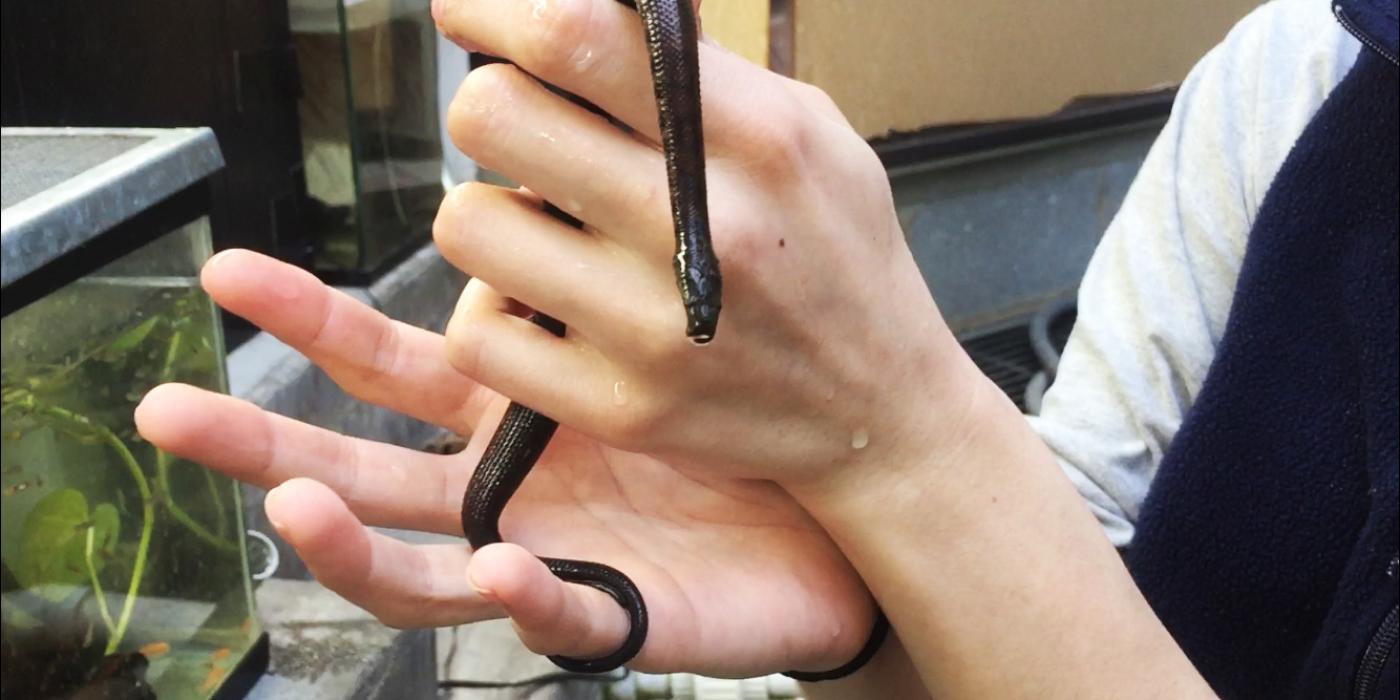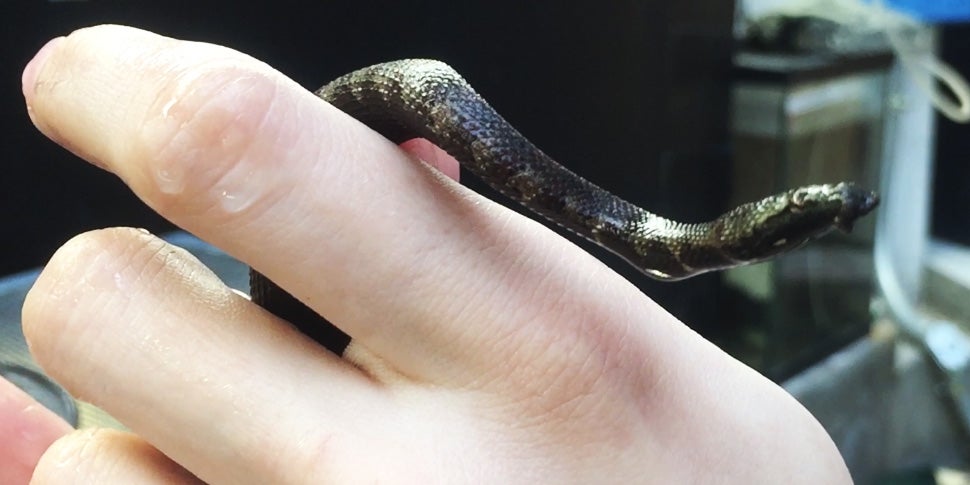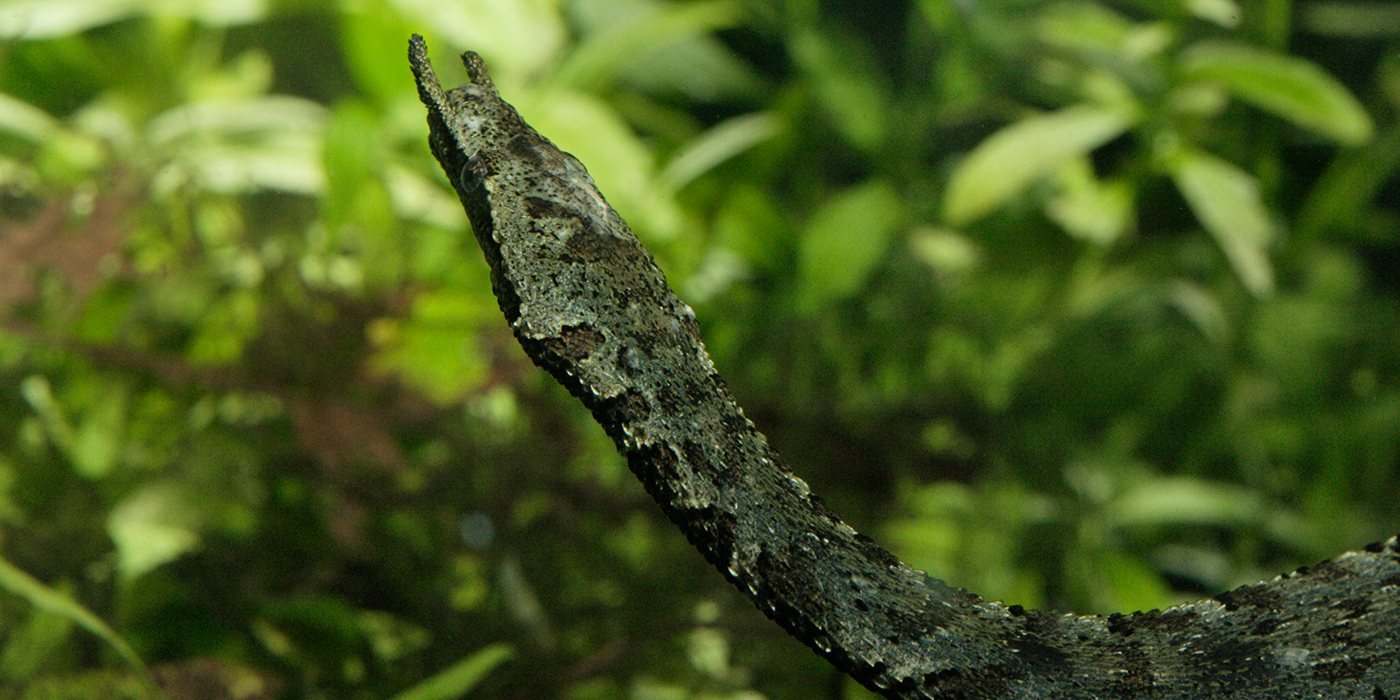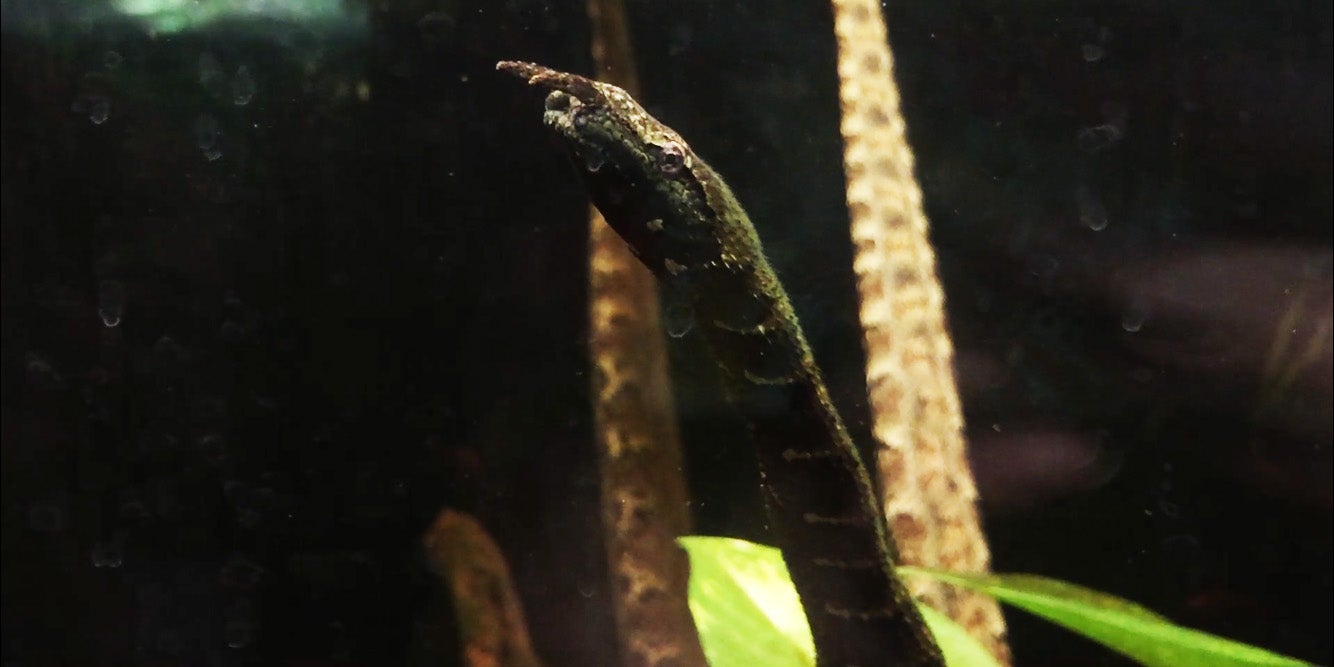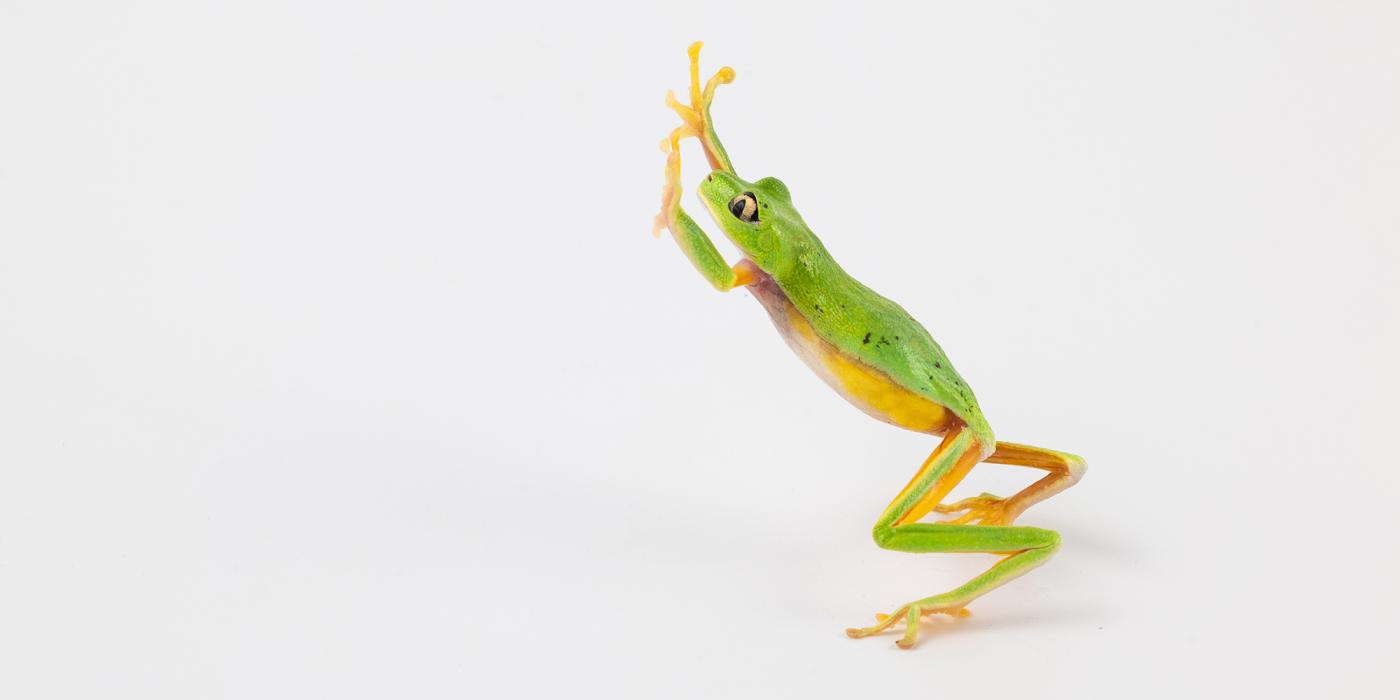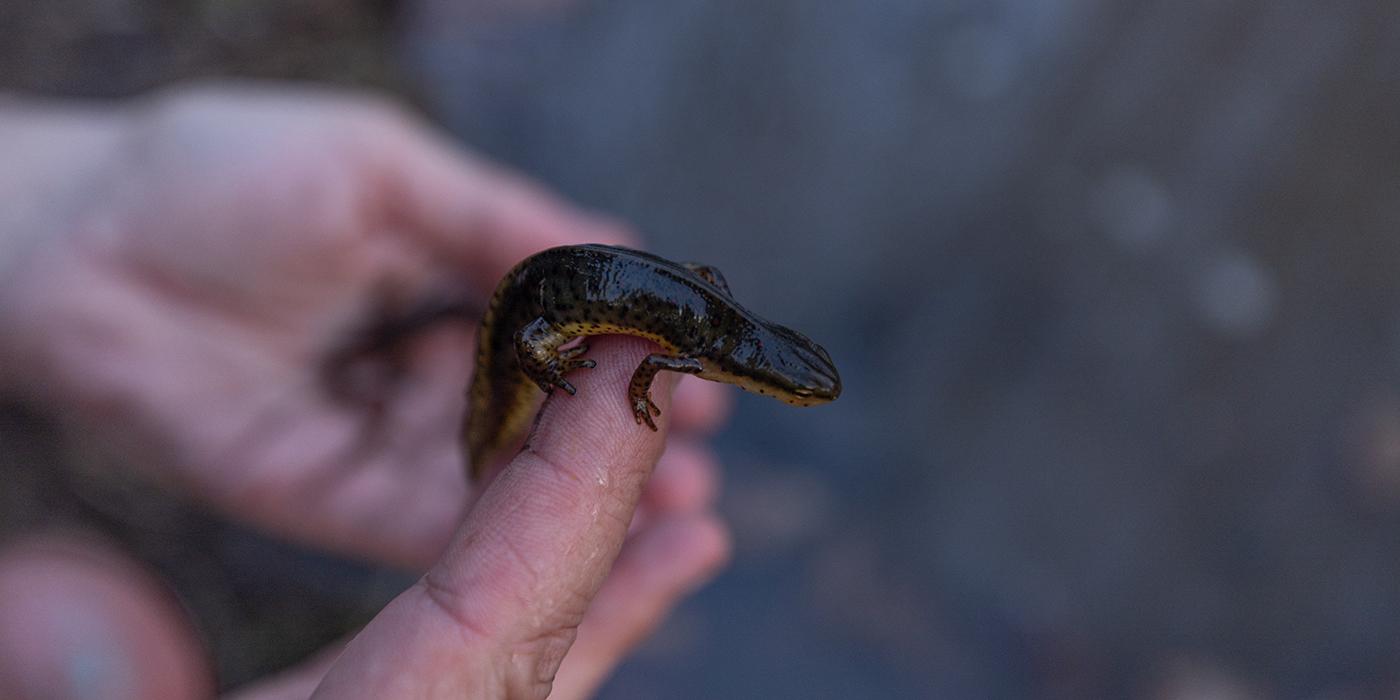New at the Zoo: Tentacled Snake Babies
Tentacled snakes are masters of hiding in plain sight. This species is so stealthy that Reptile Discovery Center staff were surprised to discover three babies in their exhibit last December. What makes this aquatic snake so unique? In this Q&A, animal keeper Erin Stewart shares some of her favorite facts about these cleverly camouflaged creatures.
What do visitors want to know about tentacled snakes?
Visitors could be looking right at our tentacled snakes and not realize they are in the exhibit—it is easy to mistake them for sticks. The pattern of their skin resembles tree bark, and for the most part, they sit still so that they do not alert prey to their presence. If they do move, they do so slowly. Whenever I point out where they are in the exhibit, it blows visitors’ minds!
Some people are surprised to learn that these snakes are viviparous, which means they give birth to live young. Once the babies are born, though, they are on their own. They instinctively know how to hunt and how to anchor themselves by wrapping their tail around plants or felled tree limbs.
How quickly do they grow?
When these babies were born Dec. 29, they were about 7 inches long and weighed about five grams. Two months later, they have more than doubled in size.
How did they get their name?
They get their name from the tentacle-like appendages that they have on their nose that look a bit like a handlebar mustache. Scientists are not certain what the tentacles’ function is, but they speculate that they may help the snake detect prey. The water tends to be murky in the snakes’ native habitat, so they cannot always rely on their sight to detect prey. These tentacles could help them detect a fish’s motion as it swims within strike range.
What is your favorite fact about this species?
Tentacled snakes are venomous and patient ambush predators. These snakes have small fangs at the rear of the mouth; their venom specifically affects fish and is not a threat to humans. While they sit still for 90 percent of the day, the 10 percent when they hunt is fascinating to watch. The snake will suddenly “bump” its body out, startling the fish to move toward its head. As it does this, it strikes in the blink of an eye. In two or three milliseconds, the fish is gone.
Our animal care team feeds the snakes goldfish. However, just because the fish disappear does not mean that all snakes are feeding equally. To verify that everyone is eating well, we will take them out and weigh them every few weeks. The adults are about 19 inches long and weigh between 150 and 250 grams.
How long can tentacled snakes hold their breath underwater?
These aquatic snakes have lungs, not gills, so they need to come up for air every 30 minutes. When a snake wants to take a breath, it will stick its nose out of the water.
How well do they move out of the water?
This species moves rather awkwardly on land, making them vulnerable to predators. They are much more agile in the water. During the dry season, they will burrow into the mud if the water level is low.
What is the tentacled snake’s conservation status?
Although the IUCN considers this species to be of least concern, one of the threats that tentacled snakes face is habitat loss from aquaculture farms. Visitors can help this and many other species by supporting conservation organizations that protect natural habitat in Vietnam, Thailand and Cambodia.
This story appears in the March 2018 issue of National Zoo News.
Related Species:
